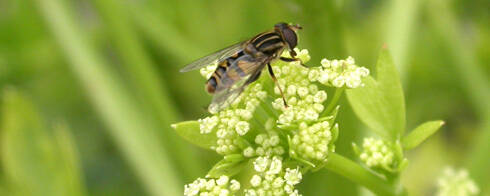Integrated Pest Management
What is IPM?

The primary aim of a pest management program is to protect crops from significant insect and disease damage while minimizing pesticide use. This process requires the application of cultural, biological, genetic and chemical methods which are ecologically and economically acceptable to both the grower and consumer.
Available techniques include scouting, effective pest control products, disease-resistant cultivars, seed spacing, canopy management, enhancing predators and parasites, among many others. The Ontario Crops Research Centre - Bradford offers scouting services to growers in the Holland Marsh. Pesticides are utilized only when pest populations exceed economically acceptable thresholds.
The benefits of IPM touch all facets of society. Growers benefit from reduced production costs, decreased risk from pest damage and decreased exposure to pesticides. Pesticide companies benefit by having a longer useful life for their products, as the development of resistance can be slowed. The general public benefits from a more sustainable agri-food system.
IPM instruction manual for muck crops 1982
Integrated pest management in onions and carrots
FACTSHEET:
A decision support system for knowledge-based management of Botrytis leaf blight of onion